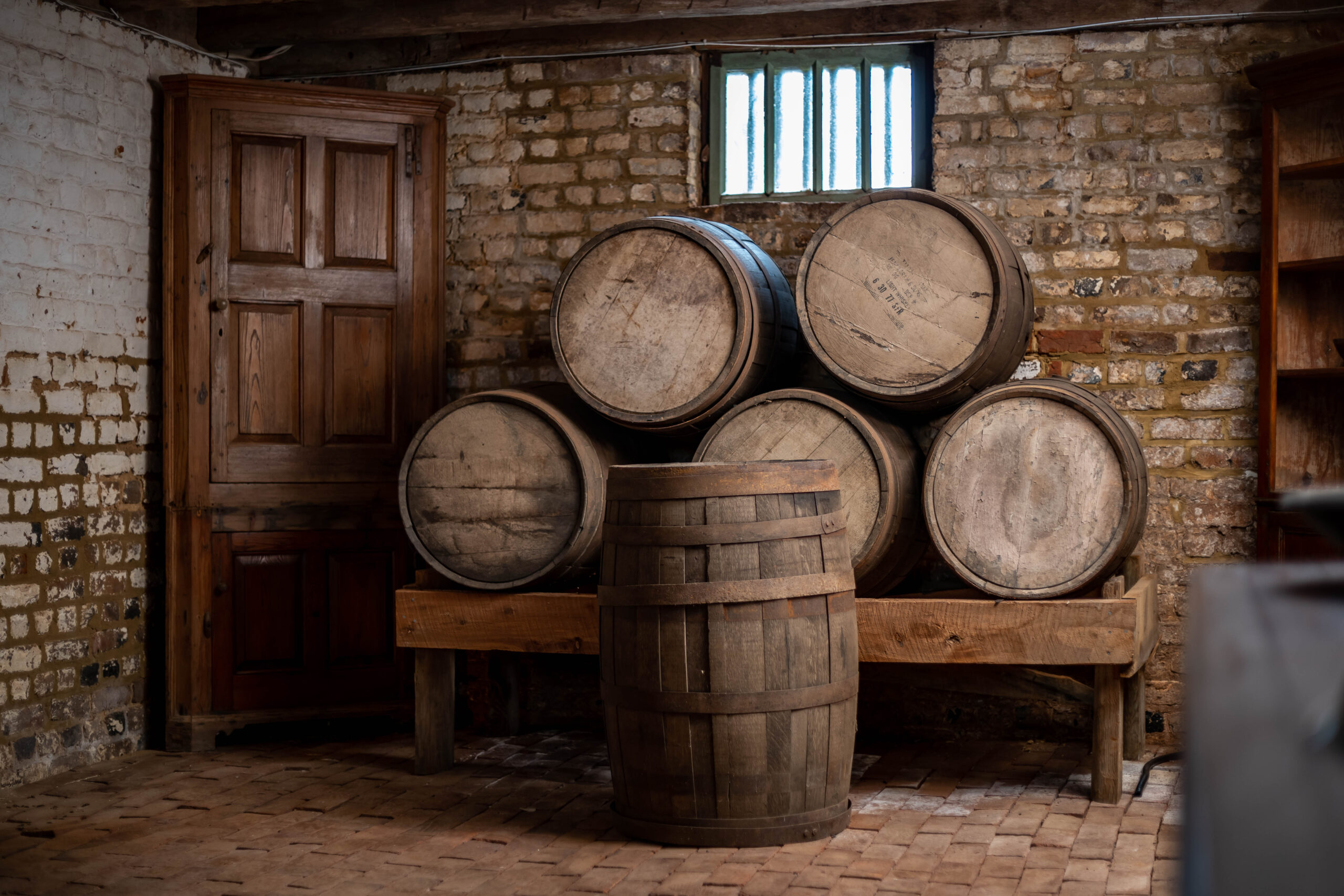
Beneath the Great Hall and Dining rooms are two English-bond storage rooms, divided in the same manner as those above them. The basement is accessed with an open-air, subterranean passage beneath the rear portico. This passage area also served as an alternative work space for servants during the hot summer months.
The first area is an antechamber, accessed by two doors with two additional doors opening to the primary storage area. There may have been a partition between the two antechamber doors separating them for different storage needs. The doors of these chambers were constructed wide enough (50-inches) to permit large casks or barrels to be rolled into the secure storage area where spirits and valuable spices such as sugar (seen as a spice in the 18th century), black pepper, cinnamon, ginger, saffron, nutmeg, mace, and cloves were stored. Spices were costly, some more so than others such as the nutmeg, mace and cloves which were harder to obtain and used judiciously. A host serving dishes containing these spices was perceived as being prestigious indeed.
On the practical side, the lady of the house held onto the keys which ensured that spirits, spices and other things were not wasted or consumed by indentured servants, servants, or enslaved servants. Similar storage spaces were in both Dolley Madison’s and Nelly Conway Madison’s storage areas under the living chambers of Montpelier. It was common practice to have servant/enslaved work areas separate from the family living spaces and the basement level Passage and later the Quarles Kitchen maintained that arrangement.

